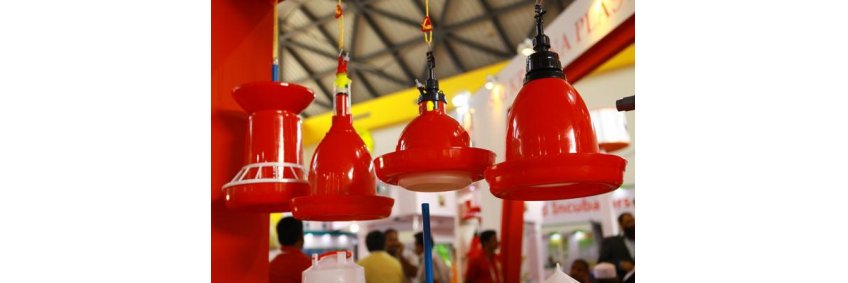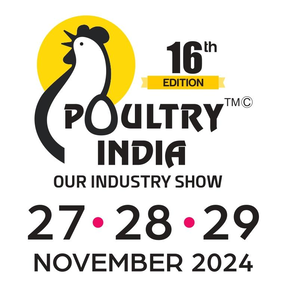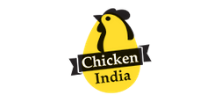Poultry Farm Equipments

Now for those who are in the process of starting a poultry farming business or you are still in the planning phase, this writeup will prove valuable to you. It is also important you know that this article is a continuation of our poultry business plan publication. Without wasting your time, below is a comprehensive list of poultry equipments and there uses.
I. Incubation equipments
1. Setter
- It is a machine in which proper temperature, humidity and turning are provided for the first 19 days of incubating chicken egg.
2. Hatcher
- It is similar to that of setter but turning mechanism is not available and the trays are designed to hold the newly hatched chicks.
- Here, the eggs are placed for the last three days of incubation.
- Various styles of setter and hatcher found around the world include,
- Walk-in or Corridor incubators
- Tunnel type incubators
- Vertical fan incubators
3. Compressed air system
- Some incubators require compressed air to actuate the turning mechanism for the racks of eggs.
- A large central compressed air system is needed for blowing down dust and other dry cleaning in the hatchery.
4. Emergency standby electric plants
- When there is a failure in the local electrical supply, the incubators must have a secondary source of electricity.
- Therefore, a standby electrical generator located on site, generally within, or next to the hatchery building is imperative.
- The standby electrical generator should have the capacity to support the all essential services of the hatchery.
5. Hatchery automation equipments
- Hatcher tray washers
- Waste removal systems
- Egg transfer machines
- In ovo vaccination equipment
- Chick box washers
- Rack washers
- Vaccinating / sexing / Grading systems
- High pressure pumps
II. Egg handling equipments
1. Hatching egg trays- Generally hatching eggs are set in the flats or bug-eye type trays.
- The capacity of each tray is either 90 or 180 chicken eggs.
2. Hatching egg transfer machines
- This is used to transfer the eggs from the breeder farm trays to hatcher trays.
- Vacuum egg lifts usually employed in the hatcheries handling large volume of eggs.
III. Egg candler
-
It is a lighting device, used to find out the internal structure of eggs.
- Two types of egg candlers are available, individual and mass candlers.
IV. Brooder equipments
- Equipment used to provide warmth and light and to rear the baby chicks during the first few weeks of life are called brooders.
- The brooders consist of some heating source, reflectors to reflect the heat and light towards the chicks, light and heat adjustment devices such as stands, thermostats and other accessories, depending on the model.
- Different equipment used for brooding are,
1. Charcoal stove / kerosene stove
- These are used in places where electricity is not available or costly and where power failure is quite common.
- These stoves are covered with plates or pans to sustain the heat in the brooding area.
2. Gas brooder
- Natural gas, LPG or methane is connected to heating element which is hanged 3 to 5 feet above the chick to provide heat.
- It is attached with canopy type reflectors to reflect the heat towards the chicks.
3. Electrical brooder
- It is also thermostatically controlled heating system that spread required amount of heat uniformly above large area, this avoid crowding of chicks under brooder directly.
- One electrical brooder can be used for 300 to 400 chicks.
4. Infra-red bulbs
- It is a self reflecting bulb and hence no need of reflector over the bulbs.
- 150 and 250 watt bulbs are available to provide sufficient heat to 150 and 250 chicks, respectively.
5. Reflectors/ Hovers
- These reflectors are called Hovers.
- These are reflectors of heat and light.
i).Flat type hover
- These hovers are flat provided with heating element, heating mechanism and pilot lamp and in some cases thermometer are also there in order to record the temperature.
- Generally they are mounted with stands on all four corners, instead of hanging from the roof.
ii).Canopy type hover
- These reflectors are in concave shape consisting of ordinary electrical bulb, thermostat mechanism and in some cases thermometer.
6. Brooder guard / chick guard
- These are thin sheets of metal, hard board, or bamboo mat of 1 to 1.5 feet height and varying in lengths.
- They are used to restrict the movement of chicks, so that the chicks will be kept closer to the brooders and prevent them from chilling.
- They are used to prevent chicks from straying too far away from heat supply until they learn the source of heat.
- We have to provide brooder guard with a diameter of 5 feet, height of the brooder should not exceed 1.5 feet.
- For this purpose, we can use materials like cardboard sheet, GI sheet, wire mesh, and mat etc. depending upon the season of brooding.
- During summer season, brooding is done for 5-6 days. In winter season it is 2-3 weeks.
7. Electrical heaters (heating rods or coils)
- This type of brooder is provided with heating elements and pilot lamps and in some cases thermometer is provided to record the temperature.
- They used to have a reflecting device over the heating rods or coils.
- The temperature can be adjusted depending on the requirement.
V. Feeding equipments
- Feeders are equipment used to feed the birds, by placing feed in them.
- They may be conventional, semi-automatic of various designs and shapes and made up of either metal or plastic.
- Different feeding equipment are,
- In case of automatic feeder the feed is supplied to the entire length of the poultry house by specially designed feed troughs with auger type or chain type devices to move the feed from the feed bins to the other end.
- These are operated with electricity and the height of the feeder can be adjusted depending upon the age of the birds.
2. Linear feeder
- Different sizes of linear feeder with guards are available.
- Provision is also made to adjust the height of the feeder.
- Linear feeders are usually made of Galvanized Iron. However it can as well be made out of any locally available material like wood, bamboo, etc.
- Provisions for stability and adjustment in height at which the feeder stands have to be made in its design.
- Birds can stand on either side of the linear feeder.
- Total feeder space available = 2* length.
- No of linear feeders = (2*Length of the feeder) ÷ Feeder space with all measurements in cm.
3. Circular feeder
- These are semi-automatic feeders and can hold 5 to 7 kg feed in its cone at a time.
- The feed is slowly delivered to the bottom by gravity.
- It can also be attached with feed grills to prevent wastage.
- These are made of high plastic and usually suspended from roof/ roof-truss or from separate pipeline for the purpose.
- These are also called as ‘hanging feeders’.
- These feeders are available in different capacity and when completely full, the feed will suffice 4 to 7 days, depending upon the age and number feeding on them.
- The height at which the feed is available can be easily adjusted by simple clamp mechanism.
- Plastic feeders will be brightly colored (red or blue, generally) and hence are expected to attract layers, especially chicks to feed.
- No. of hanging feeders = 1.3* (Circumference ÷ Feeder space) with all measurements in cm.
- 30% more birds can be accommodated in a hanging feeder when compared to that in linear feeder.
4. Shell grit box
- It is used to provide shell grit to the layer birds as a supplemental source of calcium.
VI. Water equipments
1. Water softeners and filters- Water with high total dissolved solids will cause deposits on the humidity controls, spray nozzles, jets and valve seats.
- Therefore filter systems and water softeners are necessary to reduce the TDS content of the water used for hatchery operations.
2. Water heaters
- Hot water will be necessary for operating most hatchery tray washers and for general clean up.
- A large capacity boiler is generally used to provide hot water.
VII. Watering equipments
- Waterers or drinkers are used to provide water to the birds.
- Waterers are available in different sizes, design and shape.
- This type of waterer is circular in nature, having two compartments i.e. jar for filling water and pan for delivering water.
2. Linear waterer / Channel type waterers
- This type waterer is usually attached with cages for providing continuous water supply.
- One end of channel type waterer is designed as funnel shape to receive water from a tap and the other end has the provision for draining the excess water.
3. Water basin made of plastic / wood/GI with grill
- Basins of different diameters are available (10”, 12”, 14” and 16” diameter).
- A separate grill is available to prevent the entry of birds inside the water.
4. Bell type automatic waterer
- These are made of high-impact plastic in a bell shape usually suspended from separate pipeline for the purpose.
- This type of waterers has control over the water flow and maintains the required water level always.
- There will be a continuous flow of water so as to ensure water available for the birds throughout the day.
- Height at which the water is available can be easily adjusted by simple clamp mechanism and rate of flow water is adjustable by a valve (spring-mounted). Plastic drinkers will be brightly colored (red,blue) and hence are expected to attract layers, especially chicks to water.
- No. of bell-drinkers=1.3*(circumference÷ Drinker space)
5. Nipple drinker
- It can be used both in deep-litter and in cage system.
- When used in deep-litter system, it is attached with cup under the nipple to prevent wetting of litter material.
- These drinkers look like a nipple and water drops comes out when they are pressed.
- They can be used for all types and classes of birds, but most commonly used in laying cages.
- One nipple drinkers in each cage housing 3 layers is sufficient.
6. Manual drinker
- In case of chicks during first week of brooding, manual drinkers are popularly used.
- They also referred as “fountain drinkers” because water comes out of the holes like that in case of a fountain.
- The main advantage of manual drinkers is the ease of giving vitamins and other probiotics/medicines/vaccines through water.
- Manual drinkers with stand made of high-impact plastic in bright colors (red or blue) are available.
- Arrangement of drinkers at an equal distance of 0.6m between any two feeders and feeder and a drinker.
VIII. Vaccination equipments
1. Syringe with needle/vaccine droppers- It is used to give vaccine drops through intra-nasal or intra-ocular.
2. Automatic vaccinator
- It is used to inject different doses of vaccine to large number of birds in shorter period either through intra-muscular or subcutaneous route.
3. Fowl pox vaccinator/lancet
- These are used to give fowl pox vaccine at intra-dermal route in the wing web region
IX. Miscellaneous equipments
1. Beak trimmer- It is an electrical device used to cut a portion of beak in order to prevent cannibalism among birds.
- The equipment will be mounted on to a stand of convenient height (0.60 to 0.75) with a peddle connected to the top of the unit with a chain/ strong thread so that upon pressing the peddle with the foot of the operator, the hot blade slides down cutting the beak placed over a small platform in the equipment.
- The equipment is also provided with a thermostat to regulate temperature.
2. Nest boxes
- These are used to get clean eggs and to avoid floor eggs in layer or breeder houses.
- These may be individual, communal or trap nest.
3. Weighing balances
- Different types of weighing balances are available to weigh birds or feed for record and marketing purposes.
4. Perches / Roost
- This is a wooden device usually kept at a height of about 3-5’ from the floor in order to help the bird to stand over it.
5. Rake
- It is made up of iron rods and fitted with wooden handle.
- This is used to rake the litter material in case of deep-litter system of rearing.
6. Sprinkler
- This is particularly important in hot weather areas.
- Commercial irrigation sprinklers can be used to cool not only the surroundings of the farm buildings but also the roof of the farm.
- But under hot-humid conditions, sprinklers are used only to cool the roof during afternoon hours only.
7. Sprayer
- Several types of sprayers are available in the market.
- But, that which is hand-operated and can be carried on the back while in use is most ideal for a poultry farm.
- The desired disinfectant or sanitizer can be mixed and loaded on to the tank and sprayed.
8. Flame-gun (Blow-lamp)
- It is very useful equipment and it generally works on kerosene (or gas).
- It is used to flame metal frames to rid the building from external parasites and/ or their eggs/ larva etc.









.jpg)



